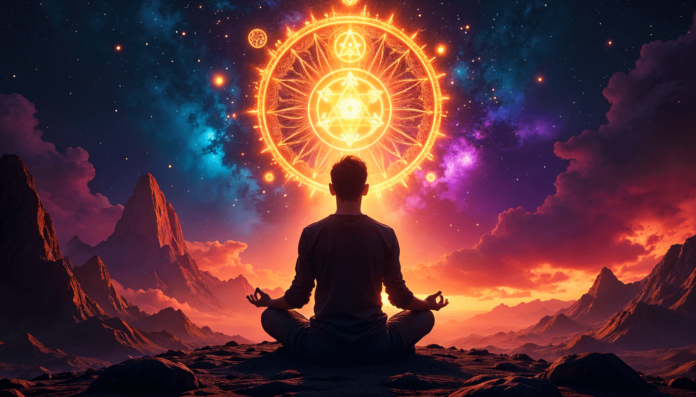The potent compound DMT, long associated with mind-bending experiences and spiritual journeys, continues to intrigue researchers and adventurers alike. As psychedelic research advances, DMT is emerging as a unique substance with both profound implications and potential therapeutic value.
What is DMT?
Known formally as N,N-dimethyltryptamine, DMT is a powerful psychedelic capable of producing intense, short-lived experiences that can dramatically alter perception. Unlike other well-known psychedelics like LSD or psilocybin, which have longer-lasting effects, a DMT experience often peaks and concludes within minutes. This brevity makes it an intriguing subject for scientific study, offering a condensed glimpse into altered states of consciousness.
Historically, DMT has been used in traditional Amazonian ceremonies as a key ingredient in ayahuasca, a psychoactive brew with deep cultural and spiritual significance. Modern scientists have isolated and studied DMT on its own, revealing a complex profile of effects and potential applications. Far from a typical psychedelic, DMT has been described as a “doorway” to alternate realities, with users frequently reporting encounters with entities and scenes that defy conventional understanding.
A Brief History of DMT Research
DMT first captured the attention of the scientific community and countercultural explorers in the mid-20th century. Harvard psychologist Timothy Leary famously referred to it as the “nuclear bomb” of psychedelics, noting its intensity relative to other mind-altering substances. However, research on DMT, like other psychedelics, was largely shut down in 1970 under President Nixon’s sweeping ban on psychoactive substances.
Interest in DMT resurfaced in the early 1990s when psychiatrist Dr. Rick Strassman conducted a groundbreaking study at the University of New Mexico. Dubbed “the spirit molecule,” Strassman’s research revitalized scholarly curiosity and laid the foundation for today’s expanding exploration of DMT’s effects and potential uses.
The Science of DMT
How can such a small molecule wield so much power over human perception? The answer appears to lie in DMT’s interaction with serotonin receptors in the brain, which play key roles in mood, cognition, and sensory perception. By engaging these receptors, DMT induces vivid visualizations, a sense of “ego dissolution,” and an experience many users describe as life-changing.
Emerging studies suggest DMT may help illuminate aspects of human consciousness. Many participants report visions of intricate patterns, otherworldly beings, and landscapes that feel more “real” than everyday reality. For researchers, these reports present an opportunity to study how the brain constructs reality—and how it might be harnessed therapeutically.
Potential Therapeutic Benefits
As psychedelics gain attention for their medical potential, DMT stands out for its short, intense experiences that could lend themselves well to clinical settings. Unlike longer trips induced by LSD or psilocybin, DMT’s quick onset and short duration may allow for controlled, guided sessions with minimal disruption to patients’ lives. This has piqued interest in using DMT to treat conditions like depression, anxiety, and PTSD.
Notably, DMT doesn’t seem to produce the same level of tolerance as other psychedelics, meaning patients could potentially undergo repeated sessions without needing higher doses. This feature makes it a promising candidate for therapies requiring frequent treatments.
Philosophical Implications
DMT’s impact extends beyond psychology and medicine—it raises profound questions about the nature of reality itself. Users often report feeling as though they’ve visited alternate realms, engaged with intelligent beings, or received insights that seem more authentic than ordinary consciousness. Prominent psychedelic advocate Terence McKenna famously commented on the difficulty of capturing the DMT experience in words, emphasizing how it challenges our understanding of existence.
These encounters continue to fuel philosophical debates about consciousness, perception, and what it means to be “real.” For many, the DMT experience suggests the existence of dimensions beyond our physical world, blurring the lines between science and spirituality.
DMT in Popular Culture
Beyond research labs, DMT has infiltrated popular culture, sparking fascination across media and social platforms. Podcasts, documentaries, and online communities now abound with personal anecdotes, theories, and explorations of DMT’s effects. Figures like Joe Rogan have publicly shared their own experiences, bringing DMT further into mainstream conversation and contributing to the growing curiosity around psychedelics as tools for self-discovery and mental health.
Despite legal restrictions, DMT’s influence continues to grow, symbolizing society’s increasing openness to exploring altered states of consciousness. The substance has become emblematic of a cultural shift toward reconsidering psychedelics’ role in mental health, spirituality, and human understanding.
The Future of DMT Research
With psychedelic research experiencing a renaissance, the future of DMT studies holds exciting possibilities. Scientists are working to unlock the biological mechanisms behind its effects, which could pave the way for safe and effective therapeutic applications. As researchers probe deeper into DMT’s interaction with the brain and consciousness, they edge closer to answering fundamental questions about the mind.
However, many mysteries remain. The exact nature of the experiences DMT induces and why it has such a powerful impact on human consciousness are questions that neuroscience may take years—or even decades—to fully unravel. Each new study brings us one step closer to understanding the molecule that has captivated scientists, therapists, and psychonauts alike.


